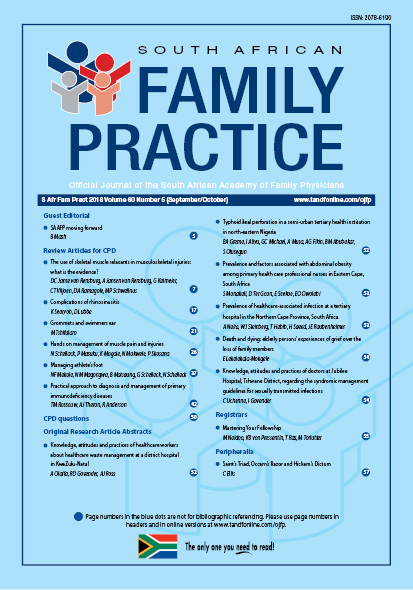Practical approach to diagnosis and management of primary immunodeficiency diseases
Abstract
The occurrence of primary immunodeficiency diseases (PIDs) is low compared to that of immune-mediated disorders of autoimmune or atopic origin. However, progress in basic and clinical immunology over the past 3–4 decades has facilitated not only improved detection of PIDs, but has also created an awareness of an expanding spectrum of these conditions. Given that those who suffer from the most severe types of PID experience life-threatening microbial and viral infections usually from an early age, prompt recognition and definitive diagnosis enable implementation of appropriate prophylaxis and therapy, and, most importantly, corrective, immunorestoration using allogeneic haematopoietic stem cell transplantation. The purpose of the current review is therefore to alert family physicians to the presentation and types of PID that they may ncounter in clinical practice, as well as to immunological screening procedures that can be undertaken to confirm or exclude the existence of the most common types of PID. This is followed by a consideration of prophylactic and therapeutic options and, finally, by a brief overview of gene therapy and gene-editing strategies that may offer alternatives to, or eventually replace, stem cell therapy.

